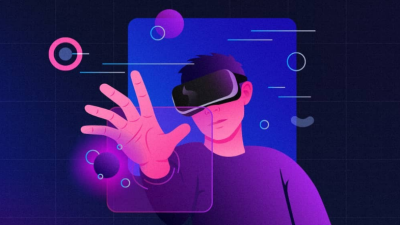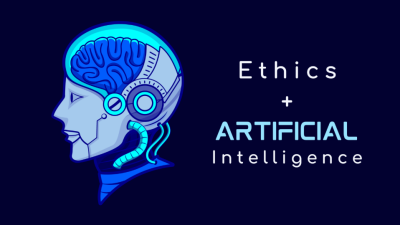Remember when augmented reality experiences were sluggish and battery-draining?
Those limitations are rapidly becoming history.
Edge computing has changed the game completely for AR applications.
By bringing processing power closer to the user, edge computing has opened doors to AR experiences that were once thought impossible on mobile devices.
The Traditional AR Processing Bottleneck
Conventional AR systems faced a fundamental challenge.
They relied heavily on cloud processing for complex calculations.
This approach created noticeable delays as data traveled to distant servers and back.
Users experienced frustrating lag between their actions and the AR response.
Battery life suffered dramatically from constant data transmission.
These limitations restricted AR’s potential, especially for applications requiring real-time interaction.
Edge computing emerged as the solution to these persistent problems.
What Makes Edge Computing Revolutionary for AR
At its core, edge computing brings processing capabilities closer to where the data originates.
Rather than sending information to distant cloud servers, calculations happen on or near the user’s device.
This proximity fundamentally transforms the AR experience.
Response times shrink from hundreds of milliseconds to nearly instantaneous.
Power consumption decreases significantly without constant data transmission.
Privacy improves as sensitive information remains local rather than traveling across networks.
The result is AR that feels dramatically more responsive and natural.
For more insights on implementing cutting-edge AR technology in your business strategy, visit our homepage.
The Technical Architecture Enabling Faster AR
Modern edge computing for AR involves several key components working together.
On-device processing utilizes increasingly powerful mobile processors for immediate calculations.
Edge servers positioned at network endpoints handle more complex computations when needed.
Smart distribution algorithms determine which processes should run locally versus at the edge.
Mesh computing enables multiple nearby devices to share processing loads when appropriate.
This layered approach ensures the most efficient use of available resources.
Each component plays a crucial role in delivering seamless AR experiences.
Latency Reduction: The Game-Changer for AR Experiences
The most immediately noticeable benefit of edge computing is dramatically reduced latency.
Traditional cloud-based AR often suffered from delays of 100+ milliseconds.
This might sound minimal, but the human brain notices even tiny delays in visual responses.
Edge computing can reduce latency to under 20 milliseconds.
This improvement crosses a critical threshold for human perception.
At these speeds, AR responses feel instantaneous rather than delayed.
The psychological impact on user experience is profound.
AR finally achieves the illusion of digital objects truly existing in physical space.
Real-World Applications Transformed by Edge AR
Edge computing has enabled entirely new categories of AR applications.
Industrial maintenance systems now overlay complex schematics on machinery with zero perceptible delay.
Technicians can interact with these visualizations naturally, without fighting system lag.
Retail applications render high-fidelity product visualizations instantly as customers move through stores.
The seamless experience encourages higher engagement and conversion rates.
Medical training simulations respond to student actions with the immediacy required for developing muscle memory.
This responsiveness is crucial for effective skill acquisition.
Multiplayer AR gaming supports fast-paced interactions between players in shared spaces.
The result is more engaging and immersive gameplay experiences.
Each of these applications would be severely compromised without edge computing capabilities.
Battery Life Extensions Through Smarter Processing
Power consumption represents a critical constraint for mobile AR.
Edge computing addresses this challenge through more efficient data handling.
Local processing eliminates the energy costs of constant network transmission.
Specialized AR chips perform common calculations with minimal power requirements.
Intelligent power management activates higher processing levels only when needed.
These improvements extend device runtime significantly during AR usage.
Longer battery life encourages more frequent and extended AR interactions.
This practical benefit has dramatically increased user adoption of AR applications.
Privacy and Security Advantages of Edge-Based AR
Processing sensitive data locally offers substantial privacy benefits.
Facial recognition features can function without sending identifiable information to the cloud.
Environmental mapping data remains on the user’s device rather than external servers.
Edge computing creates natural data minimization by limiting what leaves the device.
This approach helps developers comply with increasingly strict privacy regulations.
Users gain more confidence in AR applications with transparent data handling practices.
The privacy-preserving nature of edge computing expands AR’s potential in sensitive contexts.
Implementation Challenges and Solutions
Despite its advantages, implementing edge computing for AR presents unique challenges.
Device fragmentation requires careful optimization for various hardware capabilities.
Developers must create graceful degradation paths for less powerful devices.
Power constraints still limit the complexity of on-device processing.
Framework optimization becomes crucial for efficient resource utilization.
Testing across diverse edge configurations requires sophisticated simulation tools.
These challenges have spawned innovative development approaches specifically for edge-based AR.
The Hybrid Edge-Cloud Approach
Most successful AR implementations leverage both edge and cloud resources.
Initial processing occurs at the edge for immediate response requirements.
Cloud systems handle longer-term tasks like mapping refinement and model updates.
Machine learning models train in the cloud but deploy to edge devices for execution.
Asset libraries store in the cloud but cache at the edge based on predicted needs.
This balanced approach combines the strengths of both computing paradigms.
The result is AR that responds instantly while continuously improving over time.
The Future Landscape of Edge Computing for AR
The evolution of edge computing for AR continues at a remarkable pace.
Dedicated AR processing units are becoming standard in mobile devices.
5G networks are creating new possibilities for distributed edge processing.
On-device AI is enabling more sophisticated contextual awareness.
Cross-device coordination is allowing shared AR experiences with minimal latency.
These advancements will continue expanding the boundaries of what’s possible in augmented reality.
The gap between imagination and technical feasibility grows smaller each year.
Conclusion
Edge computing has fundamentally transformed what’s possible in augmented reality experiences.
By bringing processing power closer to users, it has addressed the core limitations that once held AR back.
The results are experiences that respond instantly, preserve battery life, and protect user privacy.
As edge computing technologies continue advancing, we’ll see increasingly sophisticated AR applications becoming commonplace in our daily lives.
The future of augmented reality isn’t just about what we see through our devices.
It’s about creating digital experiences that respond so naturally and immediately that they truly feel like part of our physical world.
Edge computing is making that future possible today.





